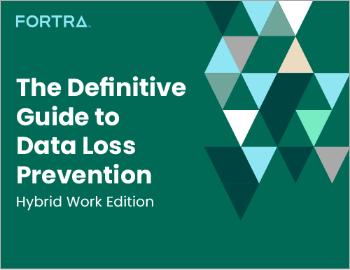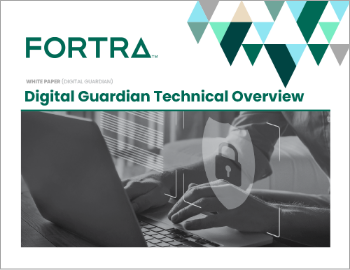What Is Enterprise Data Management (EDM)? How It Works
| Contact Us | |
| Free Demo | |
| Chat | |
Enterprise Data Management (EDM) is a comprehensive approach to defining, integrating, and retrieving data in an organization.
Business enterprises generate voluminous amounts of data daily at high velocity. So, they must find a way to securely organize, manage, and effectively integrate this data into their operations.
Enterprise data management aims to remove organizational silos, prevent data duplication, reduce costs, improve efficiency, support compliance efforts and decision-making, and ultimately enhance the overall operational performance.
What Is Enterprise Data Management?
Enterprise Data Management (EDM) is a comprehensive approach to defining, integrating, and retrieving data in an organization. This strategic data management practice allows businesses to effectively manage and utilize their data as an enterprise asset by ensuring its accuracy, consistency, and security.
EDM typically includes elements like data governance, quality, integration, privacy, master data management, and lifecycle management.
Why Is Enterprise Data Management Important?
Enterprise Data Management (EDM) is essential for several reasons:
- Improved Decision Making: High-quality and well-managed data allows for accurate insights and intelligence, leading to more informed decisions.
- Data Consistency: EDM ensures that everyone within the organization works with the same information, reducing inconsistencies and enhancing collaboration. This is especially crucial in large organizations with numerous departments working in silos.
- Regulatory Compliance: Various industries must comply with strict regulatory requirements related to data and enterprise digital rights management. EDM helps maintain such compliance, avoiding hefty fines and legal repercussions.
- Enhanced Data Security: With increasing cybersecurity threats, EDM is vital in securing a company's data assets reducing the risk of breaches and losses.
- Increased Efficiency and Productivity: With better data access and management, organizations can streamline their processes, improving efficiency and productivity.
- Cost Savings: By avoiding data-related errors and improving operational efficiency, companies can save costs in the long run.
- Customer Satisfaction: Accurate and well-managed data contribute to a better understanding of customers' needs, improving experiences and ultimately leading to higher customer satisfaction and loyalty.
- Competitive Advantage: Companies that manage their data effectively can extract valuable insights and identify trends and opportunities, leading to a competitive advantage.
What Are the Pillars of Enterprise Data Management?
The pillars of EDM define the key areas that need to be addressed to successfully implement EDM, such as the following:
- Data Governance: This refers to the overall management of the availability, usability, integrity, and security of data in an organization. It includes establishing policies, procedures, and structures to manage data effectively.
- Data Quality: This ensures the completeness, consistency, accuracy, relevance, and timeliness of data. Data quality can lead to accurate analytics, efficient operations, and correct decision-making.
- Master Data Management (MDM): MDM involves establishing a single view of all critical data during the data's lifecycle. It ensures that an organization does not use multiple, inconsistent versions of the same data in different processes.
- Data Integration: This involves combining data residing in different formats or sources and providing a unified view of them. It enables the efficient sharing of information across various departments in a company.
- Data Security: This involves protecting data from unauthorized access to maintain confidentiality and privacy and to ensure regulatory compliance. Data security includes encryption, access controls, and secure data storage and backup.
- Data Privacy: This pertains to the proper handling of data regarding consent, notice, and regulatory obligations. It's about ensuring the data collected is legally, fairly obtained, and protected from misuse.
- Data Architecture: This is the design of data and systems, defining how data is collected, stored, transformed, distributed, and consumed.
These pillars are interdependent and must be effectively managed to realize the full benefits of EDM.
What are the Benefits of Enterprise Data Management?
- Improved Decision Making: EDM provides businesses with accurate and high-quality data, which is integral for making informed decisions.
- Enhanced Data Quality: EDM ensures that the data used is clean and reliable, reducing data irregularities and inconsistencies.
- Increased Efficiency: By centralizing and streamlining data, businesses can save significant time by making it faster and easier to locate and utilize data.
- Regulatory Compliance: EDM ensures that an organization's data complies with relevant laws and regulations, reducing the risk of fines and sanctions.
- Data Security: EDM also encompasses data and file security management, minimizing the risk of data breaches and cyber-attacks.
- Greater Collaboration: Data centralization makes sharing and use across departments easier, enhancing collaboration and coherence.
- Reduced Costs: Businesses can save data storage and management costs by eliminating redundant data and streamlining data management processes.
- Enhanced Customer Service: A unified view of customer data improves customer service and personalization.
- Standardization: EDM ensures that all data adheres to a standard set of formats, improving interdepartmental communication and understanding.
- Risk Management: EDM allows businesses to manage and mitigate data accuracy and reliability risks effectively.
What Are the Best Practices For Enterprise Data Management?
- Develop a Data Management Strategy: Create a comprehensive strategy that aligns with the organization's goals. This step should determine the most valuable data and set the course for proper governance, quality control, and integration.
- Implement Data Governance: Implement a data governance framework that defines ownership, roles, and responsibilities, especially based on ISO 38505 standards recommendations and guidelines for data use, security, privacy, and quality.
- Data Quality Management: Prioritize data integrity and accuracy. Implement data cleaning, validation, duplicate removal, and other techniques to ensure high data quality.
- Master Data Management: Maintain a single, consistent view of the business’ data to avoid duplication and inconsistencies. MDM ensures all the business units use the same data points for analysis and decision-making.
- Use Appropriate Tools and Software: Leverage technologies such as ETL (Extract, Transform, Load) tools, data warehousing, and business intelligence tools to manage, store, and analyze data.
- Ensure Data Security: Protect your data from breaches and ensure compliance with relevant regulations. Use encryption, secure data storage, and regular audits to maintain data security.
- Regular Audits: Regularly evaluate and update your EDM strategy to ensure it remains effective and relevant. This could involve checking on data quality, consistency, and security.
- Foster a Data-Driven Culture: Train all users on the importance of data, how to use it, and the implications of not adhering to data-related policies. This includes everyone from executives to front-line employees.
- Proper Documentation: Record data definitions and data lineage. Include information on data origin, transformation, and usage.
- Data Lifecycle Management: Consider the entire data lifecycle, from creation and storage to disposal. This would involve understanding data flow, access, retention, archiving, and deletion policies.
What Are the Key Components of Successful Enterprise Data Management?
- Data Governance: This involves setting up rules and policies for data management to ensure data consistency, accuracy, and reliability across the organization.
- Data Protection: A crucial part of the role is to ensure the security and privacy of the data. They ensure compliance with file sharing and data protection regulations and proactively prevent data breaches.
- Master Data Management: MDM organizes, categorizes, and consolidates critical data from different sources into a single reference point.
- Data Quality: This component ensures the data is accurate, consistent, and complete. It typically involves processes such as data cleaning, validation, and rectification.
- Data Integration: This refers to combining data from different sources into a single, unified view. This helps businesses to make data-driven decisions.
- Data Security: A crucial component that protects data from unauthorized access, corruption, or theft. This often includes data encryption, user access control, and regular data backups.
- Data Architecture: This involves designing and structuring data storage and management systems. The architecture must be robust and flexible to handle growing data volumes, use cases, and business needs.
- Metadata Management: Managing metadata is crucial in understanding the source, usage, and relationships between data sets.
- Data Lifecycle Management: This involves managing data from its creation to its eventual retirement or deletion, ensuring optimal use of data at every stage.
- Data Privacy: Ensuring compliance with regulations like GDPR and CCPA and responsibly handling users' personal and sensitive data.
How Fortra Can Help You Implement A Enterprise Data Management System
Fortra can help your organization organize and leverage your data as a strategic asset. Fortra’s Data Classification Suite (DCS) for instance, can keep your digital assets secure, compliant, and scalable, contributing to your success and longevity, while Fortra's Digital Guardian can help prevent any unauthorized or inappropriate sharing, transfer, or use of sensitive data.
Interested in learning more? Schedule a demo today to learn how to boost your enterprise data management.
Recommended Resources

All the essential information you need about DLP in one eBook.

Expert views on the challenges of today & tomorrow.

The details on our platform architecture, how it works, and your deployment options.
Don't Fall Behind
Get the latest security insights
delivered to your inbox each week.
Thank you for subscribing!
